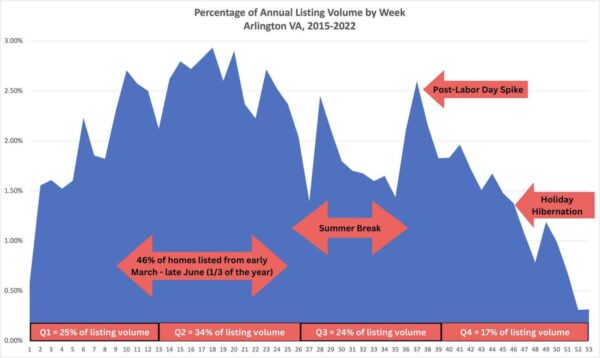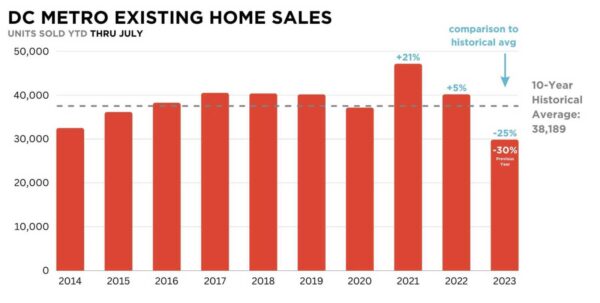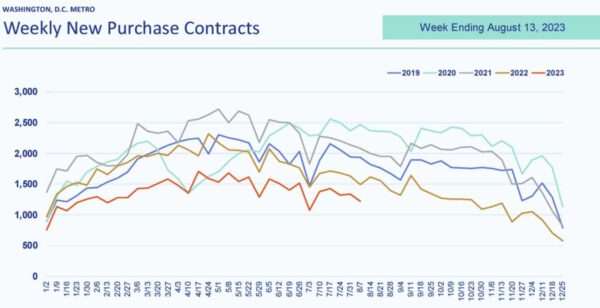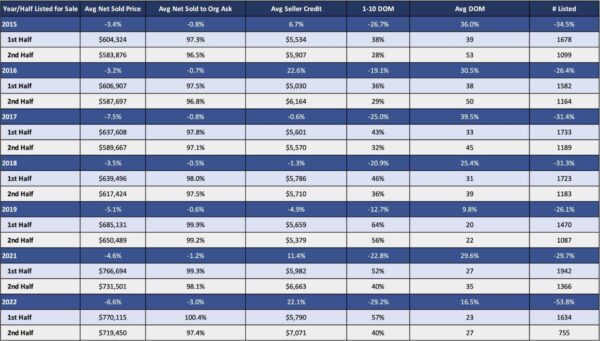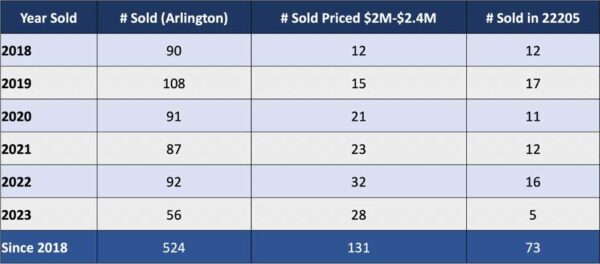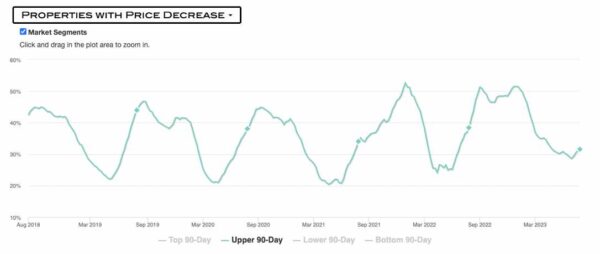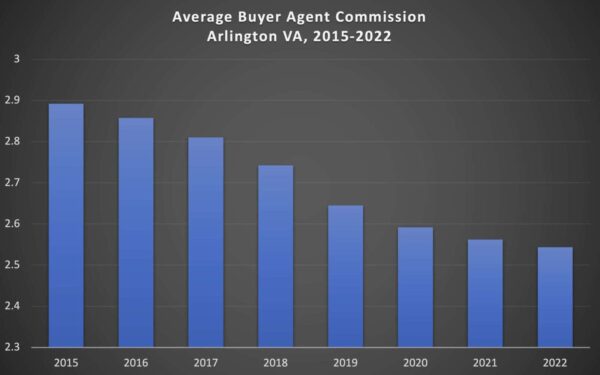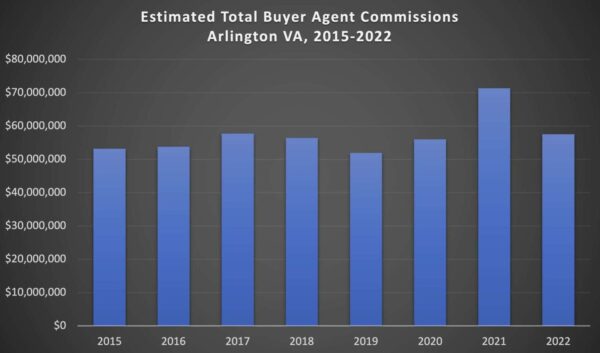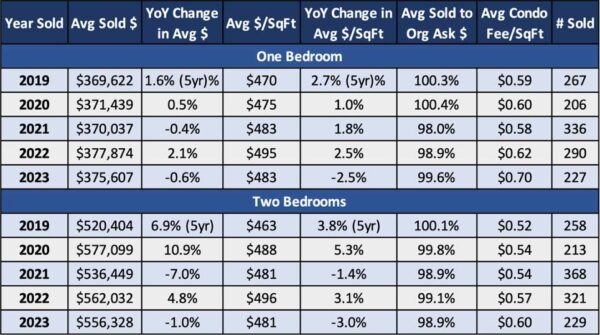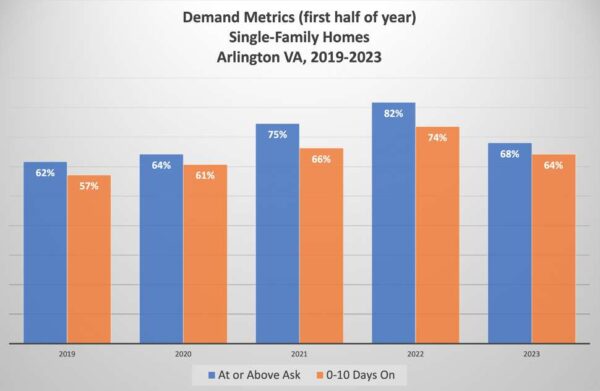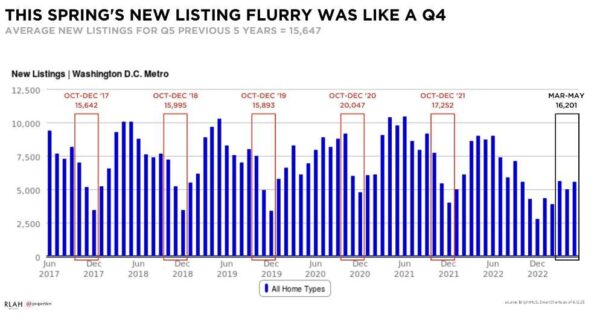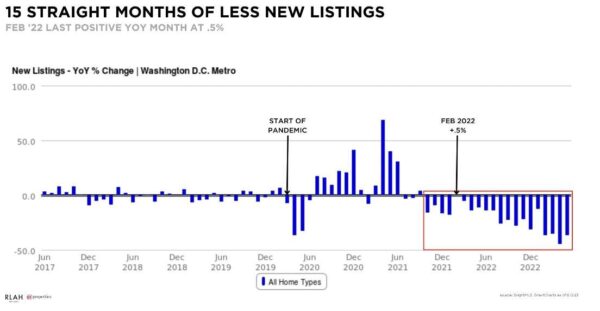This regularly scheduled sponsored Q&A column is written by Eli Tucker, Arlington-based Realtor and Arlington resident. Please submit your questions to him via email for response in future columns. Video summaries of some articles can be found on YouTube on the Eli Residential channel. Enjoy!
Question: Can you provide any additional data on what the market will do for the remainder of the year?
Answer: If you have enjoyed my real estate columns over the years, I would greatly appreciate your vote for Arlington Magazine’s Best Of Arlington, Real Estate Agent (in the Home section) and encourage you to support all of your favorite Arlington businesses with a meaningful vote!
Last week I published an article highlighting that the second half of the year is easier on buyers than the first half. This week we can explore some other predictable market trends to help buyers and sellers anticipate the upcoming market.
New Listings to Spike in Two Weeks, Then Fall Sharply
There will be a predictable spike in new listings after Labor Day, proceeded by a rapid decline through the end of the year.
- Just 17% of total annual listing volume comes to market in Q4, with less than 7% of total listing volume over the last two months of the year
- 46% of homes are listed for sale during 1/3 of the year from early March to late June
- The market goes on summer break with everybody else from late June through August
- Note: this chart is for Arlington but the same trends can be applied across the region
Our Q4 Lows Will be REALLY Low
Broken record time… we are experiencing historically low listing volume with sales down 25% from the historical average across the DC Metro. Total listing volume in Q2 (when we have the most inventory come to market) was on par with Q4 volume in previous years (least amount of inventory) so we will likely see just a trickle of homes hitting the market in Q4 this year.
Buyer Activity/Demand Will Also Jump Soon, Then Fall Around Holidays
Along with a pop in listing volume after Labor Day, there’s usually a coinciding jump in buyer showing and contract activity that lasts through mid/late October before nose-diving in November.
But Sellers Will Continue to Reduce Asking Prices
Courtesy of Altos Research, the chart below highlights the annual cycle of the percentage of homes reducing the asking price. The diamond and circular markers represent Aug. 13 of each year and show that we are just past the halfway point of a sharply increasing number of price reductions through the end of the year as sellers fight to attract buyers before the holidays.
If you’d like to discuss buying, selling, investing, or renting, don’t hesitate to reach out to me at [email protected].
If you’d like a question answered in my weekly column or to discuss buying, selling, renting, or investing, please send an email to [email protected]. To read any of my older posts, visit the blog section of my website at EliResidential.com. Call me directly at (703) 539-2529.
Video summaries of some articles can be found on YouTube on the Eli Residential channel.
Eli Tucker is a licensed Realtor in Virginia, Washington DC, and Maryland with RLAH Real Estate, 4040 N Fairfax Dr #10C A



